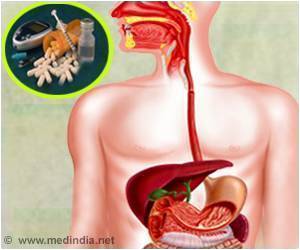All moving parts in enzymes must be tightly controlled and coordinated, failing which the reaction will not work.
All moving parts in enzymes must be tightly controlled and coordinated, failing which the reaction will not work. The moving parts, which include molecules such as substrates and cofactors, all fit into a complex enzyme pocket just like a baseball into a glove. Once all the chemical parts have found their place in the pocket, the energetics that control the reaction become favorable, and swiftly make chemistry happen. Each enzyme releases its product, like a baton handed off in a relay race, to another enzyme to carry out the next step in a biochemical pathway in the human body.
For the new study, the researchers chose a pair of universal enzymes, glucose-6 phosphate dehydrogenase (G6pDH) and malate dehydrogenase (MDH), that are important for biosynthesis—making the amino acids, fats and nucleic acids essential for all life. For example, defects found in the pathway cause anemia in humans. "Dehydrogenase enzymes are particularly important since they supply most of the energy of a cell", said Walter. "Work with these enzymes could lead to future applications in green energy production such as fuel cells using biomaterials for fuel."
In the pathway, G6pDH uses the glucose sugar substrate and a cofactor called NAD to strip hydrogen atoms from glucose and transfer to the next enzyme, MDH, to go on and make malic acid and generate NADH in the process, which is used for as a key cofactor for biosynthesis.
Remaking this enzyme pair in the test tube and having it work outside the cell is a big challenge for DNA nanotechnology.
To meet the challenge, they first made a DNA scaffold that looks like several paper towel rolls glued together. Using a computer program, they were able to customize the chemical building blocks of the DNA sequence so that the scaffold would self-assemble. Next, the two enzymes were attached to the ends of the DNA tubes.
In the middle of the DNA scaffold, they affixed a single strand of DNA, with the NAD+ tethered to the end like a ball and string. Yan refers to this as a swinging arm, which is long, flexible and dexterous enough to rock back and forth between the enzymes.
Once the system was made in a test tube by heating up and cooling the DNA, which leads to self-assembly, the enzyme parts were added in. They confirmed the structure using a high-powered microscope, called an AFM, which can see down to the nanoscale, 1,000 times smaller than the width of a human hair.
Advertisement
Like architects, the scientists first built a full-scale model so they could test and measure the spatial geometry and structures, including in their setup a tiny fluorescent dye attached to the swinging arm. If the reaction takes place, they can measure a red beacon signal that the dye gives off---but in this case, unlike a traffic signal, a red light means the reaction works.
Source-Eurekalert
















